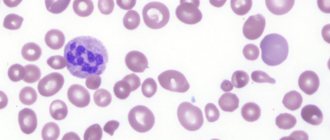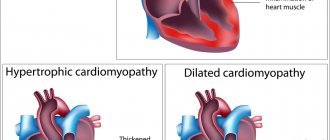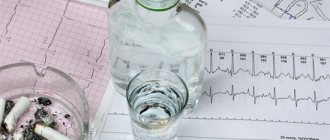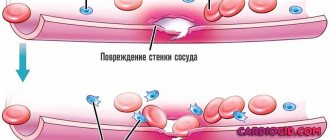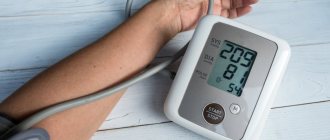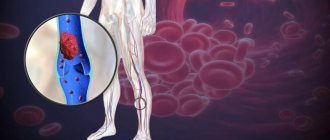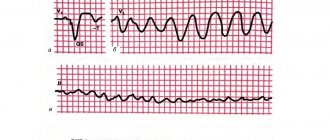Ketoacidosis is a complex of symptoms that develop as a result of a shift in acid-base balance with the development of acidosis due to the accumulation of a high concentration of ketone bodies in the blood.
More often, ketoacidosis develops as an emergency condition that complicates the course of diabetes mellitus, although it can sometimes be observed in people who do not have this diagnosis.
Ketoacidosis is an emergency condition associated with the accumulation of ketone bodies in the blood.
Normally, the conversion of glucose absorbed into the systemic bloodstream from the gastrointestinal tract occurs in two directions. Firstly, it is used to meet the body's energy needs, turning into energy through glycolysis. Secondly, it is stored in the form of glycogen or fat to cover possible energy costs if necessary. The utilization of glucose from the bloodstream into the body's cells is ensured by insulin, a hormone of the pancreas.
In diabetes mellitus, in conditions of insulin deficiency, a large amount of unutilized glucose is concentrated in the blood, which triggers a cascade of pathological reactions: the synthesis of ketone (acetone) bodies is activated, the volume of their excretion decreases, alkaline buffer systems are depleted and the internal environments of the body are acidified - ketoacidosis itself develops.
Lactic acidosis what is it
Lactic acidosis is a disorder of glucose metabolism, which leads to increased blood acidity, and as a result, destruction of blood vessels, pathology of nervous activity, and the development of hyperlactic acidemic coma.
Normally, glucose entering the blood penetrates the cells and is broken down into water and carbon dioxide. In this case, energy is released, which provides all the functions of the human body. During the conversion process, more than a dozen chemical reactions occur with carbohydrates, each of which requires certain conditions. The key enzymes that ensure this process are activated by insulin. If due to diabetes there is not enough of it, the breakdown of glucose is inhibited at the stage of pyruvate formation, which is converted in large quantities into lactate.
In healthy people, the normal level of lactate in the blood is less than 1 mmol/l; its excess is utilized by the liver and kidneys. If the intake of lactic acid into the blood exceeds the ability of the organs to remove it, a shift in the acid-base balance of the blood occurs to the acidic side, which leads to the development of lactic acidosis.
When lactate in the blood accumulates more than 4 mmol/l, the gradual increase in acidity becomes abrupt. Strengthening the situation in an acidic environment worsens the situation. Disturbances in carbohydrate metabolism are accompanied by distortions in protein and fat metabolism, the level of fatty acids in the blood increases, metabolic products accumulate, and intoxication occurs. The body is no longer able to break out of this circle on its own.
Even doctors cannot always stabilize this condition, and without medical help, severe lactic acidosis always ends in death.
Diet for ketoacidosis
Diet for insulin resistance
- Efficacy: therapeutic effect after a month
- Timing: constantly
- Cost of products: 1500-1600 rubles. in Week
Nutrition for metabolic disorders should first of all be healthy and balanced. It is necessary to strictly control:
- drinking regime - constant consumption of compotes, raisin infusions and alkaline mineral waters is recommended;
- fat consumption - preference should be given to healthy omega-3 fatty acids , enrich the diet with seafood, seeds and nuts;
- mode of intake and quality of carbohydrate foods - you need to start the day with complex carbohydrates - cereals, fruits and give up simple easily digestible carbohydrates - flour, bakery products, refined sugar and sweets;
- consume protein foods in sufficient quantities daily, especially for children, adolescents and pregnant women;
- the presence of a large amount of fiber in the diet;
- takes care of vitamins and minerals, their intake in full, possibly supplementing the diet with multivitamin preparations.
Meals should be fractional - small portions up to 100-150 g every 2-3 hours, light dinner no later than 19:00. Food products can only be eaten fresh, boiled, stewed, baked or steamed.
Treatment
Self-medication at home often leads to death. Therapy is carried out only in a hospital setting.
A dropper of sodium bicarbonate solution will help reduce the acidity of the blood and body tissues.
Intravenous administration of the drug must be carried out under strict control of the blood pH , it must be within normal limits.
Diabetics are given insulin if necessary. To correct hemostasis, heparin and blood plasma are also administered intravenously.
After normalization of the blood condition, the patient is prescribed drugs that improve blood circulation and thrombolytics. Subsequently, a person must support the body for the rest of his life with the help of acetylsalicylic acid and anticoagulants.
Recommendations for the use of drugs
Some hypoglycemic drugs can also cause complications , for example, the simultaneous use of medications for viral and colds .
Festered wounds can be the initial cause of lactic acidosis.
There are frequent cases when therapy with medications with biguanides, for renal failure , became a catalyst for lactic acidosis. This may be due to the accumulation of the drug in the body.
If a diabetic has forgotten to take medication, then you should not compensate for this by taking several tablets at once. Exceeding the dose of medication can provoke serious consequences for the body.
Prevention
Preventive measures are reduced to preventing the state of hypoxia of tissues and organs, as well as treatment and control of diabetes mellitus.
Basically, complications in the form of lactic acidosis are detected in diabetics, so it is important to control the underlying disease and strictly follow all the instructions of the attending physician. Don't let the disease take its course
It is necessary to periodically take tests and monitor the dynamics of diabetes mellitus in order to adjust the dosage of medications.
A person who has experienced lactic acidosis coma must do everything to avoid provoking such a condition again. After receiving tests that show an increase in lactic acid levels, you should urgently contact an endocrinologist to prescribe appropriate therapy.
Lactic acidosis in diabetes mellitus symptoms, treatment
Lactic acidosis is a dangerous pathological condition that occurs when large amounts of lactic acid enter the blood. In this case, the body cannot cope with sufficient excretion, which is why it accumulates. This causes a serious disturbance in the acid-base balance. The body ceases to cope with the negative changes occurring, and the development of lactic acidosis begins.
Pathology can be diagnosed in healthy people (for certain reasons), as well as in patients with diabetes. In the second case, lactic acidosis (ketoacidosis, diabetic acidosis) is often the result of uncontrolled diabetes.
As a result, the body begins to produce organic acids (ketone bodies) in large quantities. For diabetics, this condition is extremely dangerous, as it can cause hyperlactic acidemic coma.
Today we will talk about lactic acidosis in diabetes mellitus, we will find out the symptoms, treatment of this pathology, and also learn about preventive measures. We will begin our topic with a description of its characteristics:
Signs of diabetes
Very often, nothing predicts the appearance of lactic acidosis. However, in a very short time, in just a few hours, symptoms of acute pathology appear. The earliest ones include: pain in the muscles and behind the sternum, a state of apathy, drowsiness (insomnia), rapid breathing.
Attention! Next, the main symptom of lactic acidosis develops - cardiovascular failure, complicated by high acidity. Further, as the pathology progresses, abdominal pain appears, accompanied by nausea and vomiting
If the necessary treatment measures are not taken, the patient's condition will deteriorate greatly.
There is a slow reaction. A person reacts little to the surrounding reality, then stops noticing it altogether. The patient experiences involuntary muscle contractions, convulsions, decreased activity and motor activity.
With further development of lactic acidosis, a coma occurs. Its harbinger is the appearance of intermittent breathing followed by loss of consciousness.
Treatment of the condition
With this dangerous complication of diabetes, the patient needs urgent medical attention. When placed in a medical institution, he is given a drip of sodium bicarbonate solution. At the same time, the level of potassium in the blood is constantly monitored.
A patient suffering from diabetes is prescribed additional insulin injections. If necessary, the daily dosage is adjusted, or the drug used is replaced. Also used in treatment is a carboxylase solution, which is administered intravenously by drip. If prescribed by a doctor, it is possible to administer blood plasma. Treatment is with heparin (in small doses).
Prevention of the condition
Lactic acidosis, the symptoms and treatment that we discussed with you today, can always be prevented. To do this, use the following recommendations:
- First of all, a patient with diabetes should take into account the effect of medications that reduce sugar on the body. In the absence of certain side diseases, these drugs effectively cope with their task and do not cause any negative consequences.
- However, if any disease occurs, infectious, viral, even a cold, the body’s reaction to a drug that lowers sugar can be unpredictable. Therefore, in such cases, a diabetic patient is advised to consult with his or her doctor.
- In particular, lactic acidosis can occur due to the intake of biguanides. Therefore, the doctor prescribes its dosage strictly individually. The patient must strictly follow these instructions and comply with all medical recommendations.
- In addition, it is necessary to carefully monitor the dynamics of the development of the disease, visit a doctor regularly, and take the necessary tests on time. At the slightest suspicion of the development of lactic acidosis, it is necessary to visit an endocrinologist as soon as possible. Be healthy!
Symptoms and signs of diabetic ketoacidosis
A person with diabetic ketoacidosis may experience one or more of the following symptoms:
- excessive thirst
- frequent urination
- general weakness
- vomit
- loss of appetite
- confusion
- abdominal pain
- dyspnea
- Kussmaul's breath
- sick look
- dry skin
- dry mouth
- increased heart rate
- low blood pressure
- increase in breathing rate
- characteristic fruity odor on breath
- loss of consciousness (diabetic ketoacidotic coma)
What is lactic acidosis
Lactic acidosis (lactic acidosis) is an increase in the level of lactic acid in the blood. This is caused by its excessive production and impaired excretion from the body by the kidneys and liver. This is a fairly rare condition that is a consequence of certain diseases.
Important: It is one of the complications of diabetes mellitus in elderly patients. Possibility of death – more than 50%
Lactic acid in the body is a product of glucose processing. Its synthesis does not require oxygen; it is formed during anaerobic metabolism. Most of the acid enters the blood from muscles, bones, and skin.
Subsequently, lactates (lactic acid salts) must pass into the cells of the kidneys and liver. If this process is disrupted, the acid content increases quickly and spasmodically. Excess lactate is formed due to severe metabolic disorders.
Pathology is observed with increased synthesis and disturbances in excretion - kidney disease, disturbances in the content of red blood cells in the blood.
Lactate control is necessary in athletes, since their growth is possible under heavy loads.
There are two types of lactic acidosis:
- Type A is caused by a lack of oxygen supply to tissues and occurs due to problems with breathing, cardiovascular diseases, anemia, and poisoning.
- Type B - occurs due to improper formation and removal of acid. Lactic acid is produced in excess and is not utilized in diabetes mellitus and liver pathologies.
Lactic acidosis is generally caused by:
- oncological diseases (lymphomas);
- uncompensated diabetes mellitus;
- chronic kidney damage (severe forms of glomerulonephritis, nephritis);
- liver pathologies (hepatitis, cirrhosis);
- genetic diseases;
- poisoning, including those caused by drugs (Phenformin, Methylprednisolone, Terbutaline and others);
- severe infectious diseases;
- toxic alcohol poisoning;
- epileptic seizures.
A normal lactate/pyruvate ratio in the blood (10/1) is of fundamental importance. Violation of this proportion in the direction of increasing lactate increases quickly and can lead to a serious condition for the patient.
Determination of lactate levels is carried out using biochemical analysis. The norms are not defined by international standards, as they depend on the research methods and materials used.
For adults, the normal blood level is in the range of 0.4-2.0 mmol/l.
Diagnosis of lactic acidosis coma
If lactic acidosis is suspected, clinical manifestations are taken into account as an auxiliary component. Lactic acidosis can be suspected in any form of metabolic acidosis that is associated with an increased anion gap. In lactic acidosis, the degree of anion gap can vary, but it is never normal.
After blood is collected for biochemical testing, it should be immediately cooled to a temperature of 0 to 4 °C in order to prevent the formation of lactic acid by red blood cells in vitro. To confirm the diagnosis, the concentration of lactic acid in the patient’s blood is determined. In this case, the determination of not only the left-handed, but also the right-handed isomer of lactic acid is of great diagnostic importance.
Differential diagnosis of lactic acidosis is carried out with hypoglycemia of various origins (including glycogenosis), encephalopathy.
Lactic acidosis is very difficult to diagnose. The picture of the disease is shown by laboratory biochemical studies of blood parameters. Analyzes reveal an increased lactate content, and when examining data on the acid-base state, an increase in the plasma anion gap is detected. The presence of lactic acidosis is indicated by the following data:
- the concentration of lactate in the blood serum reaches a value of 2 mmol/l (with the norm being 0.4-1.4);
- the bicarbonate concentration level is less than 10 mmol/l (the norm is about 20);
- the amount of nitrogen-containing substances in protein metabolism increases (hyperazotemia);
- indicators of the ratio of lactic and pyruvic acid 10:1;
- abnormally increased lipid levels (hyperlipidemia);
- the blood pH value drops below 7.3.
Of course, diagnostics are carried out by doctors who come to the call. It is quite difficult to determine the type of coma by appearance, especially considering the lack of acetone odor. The patient is urgently hospitalized in intensive care, where the glucose level is determined (and it may be normal), the absence of ketosis and a significant level of lactic acid (2 or more times higher than normal) are seen.
Blood biochemistry will help identify lactic acidosis coma
Diagnosis can be complicated by the fact that the patient also has diabetes, since lactic acidosis can develop against the background of diabetic coma.
At this stage, it is important to distinguish the condition from poisoning with acetic acid, overdose of salicylic acid derivatives (anti-inflammatory drugs), and the use of methanol and ethylene glycol.
It is better to accompany the patient to the intensive care unit, since a survey and history of the disease can only be done with the help of the victim’s relatives.
The diagnosis of lactic acidosis with the symptoms indicated above is quite difficult to determine, although they are taken into account as auxiliary criteria. Reliable are laboratory criteria, which are based on determining in this case an increase in the content of lactic acid in the blood, as well as a decrease in bicarbonates and reserve alkalinity, moderation of hyperglycemia and the absence of acetonuria.
When considering lactic acidosis and its symptoms, treatment is determined primarily to promptly eliminate hypoxia, as well as acidosis itself. Emergency care for lactic acidosis and symptoms involves intravenous drip administration of sodium bicarbonate solution (2.5 or 4%) in a volume of up to 2 l/day.
In this case, pH levels should be kept under control, as well as potassium levels in the blood. Also mandatory for lactic acidosis and symptoms, treatment is insulin therapy of an intensive genetically engineered nature of action or monocomponent insulin therapy with a short nature of its action.
As additional components for lactic acidosis and symptoms in the treatment, intravenous carboxylase is used by drip method with the introduction of about 200 mg/day. It is relevant to administer intravenously blood plasma, small doses of heparin, which contribute to the correction of hemostasis, as well as the administration of rheopolyglucin.
Necessary therapy
Treatment of lactic acidosis is carried out only within the walls of a hospital. It is necessary to exclude all attempts at self-medication, as they can be fatal.
Therapy of the disease is based on a method of enriching cells with oxygen, the lack of which provokes pathology. For this purpose, forced ventilation of the lungs is used, which eliminates hypoxia.
Since the patient is in a very serious condition, sodium bicarbonate is immediately prescribed (if the acidity is less than 7). The drug is administered until the acidity level is above 7. If a person has kidney pathologies, hemodialysis is required.
Naturally, diabetics undergo insulin therapy. To eliminate metabolic disorders, a drip (insulin with glucose) is placed. Products that support the functioning of blood vessels and the heart are also used. Basically, blood acidity is reduced with a soda solution, which is infused intravenously (2 liters per day).
Carrying out detoxification therapy:
- Blood plasma is administered intravenously.
- Then a carboxylase solution is injected into a vein.
- Administration of heparin.
- To eliminate blood clotting - rheopolyglucin solution.
If acidity can be reduced, the patient is recommended to use thrombolytics that normalize blood flow.
Important! Lactic acid coma indicates improper diabetes treatment.
Folk remedies
For the strengthening effect of complex therapy, the use of herbal preparations is permissible. There are some traditional medicine recipes:
mistletoe
This plant normalizes the amount of lactate. Brewed and drunk instead of tea. Then you should refrain from eating for about an hour.
Geranium Roberta
Perfectly restores metabolism. The plant allows you to bind lactic acid that comes out naturally.
- Decoction. 250 ml of dry raw materials are poured with boiling water. The resulting drink is infused and taken 100 ml twice a day.
- Tincture. The plant is mixed with glycerin in a ratio of 1:4. The mixture must be infused for 21 days. Take a teaspoon twice a day.
- Wine. The base is fortified wine (red). A tablespoon of the plant is added to 500 ml of wine. Let it sit for at least a month. Before going to bed, take one teaspoon.
Flax-seed
These seeds reduce the acid balance and restore the functioning of the gastrointestinal tract. Seeds soaked in warm water are infused for about an hour. The mixture is drunk completely without removing the flax seed. The procedure is carried out on an empty stomach.
All remedies are effective, but before using them you should consult an endocrinologist.
Classification of acidosis
According to the mechanisms of development of acidosis, the following types of disorders are distinguished:
- Non-respiratory acidosis;
- Respiratory acidosis (inhaling air with a high concentration of carbon dioxide);
- Mixed type of acidosis (a condition caused by different types of acidosis).
Non-respiratory acidosis, in turn, is subject to the following classification:
- Excretory acidosis is a condition that develops when the function of removing acids from the body is impaired (impaired kidney function);
- Metabolic acidosis is the most complex condition characterized by the accumulation of endogenous acids in the tissues of the body;
- Exogenous acidosis is a state of increased acid concentration caused by the intake of a large amount of substances into the body that are converted into acids during metabolism.
According to the pH level, acidosis is classified as:
- Compensated;
- Subcompensated;
- Decompensated.
When the pH level reaches the minimum (7.24) and maximum (7.45) values (normal pH = 7.25 - 7.44), protein denaturation, cell destruction, and enzyme function decrease, which can lead to the death of the body.
Diagnosis of diabetic ketoacidosis
The diagnosis of diabetic ketoacidosis is usually made after the doctor obtains the patient's medical history, performs a physical examination, and reviews laboratory tests.
To make a diagnosis, blood tests will be done to document the levels of sugar, potassium, sodium, and other electrolytes in the blood. Tests for ketone levels and kidney function are also usually performed along with a blood sample (to assess blood pH levels).
Other tests may also be used to check for conditions that may cause diabetic ketoacidosis based on your medical history and physical examination. These diagnostic procedures include:
- chest x-ray
- electrocardiogram (ECG)
- Analysis of urine
- computed tomography of the brain (in some cases)
Preventive recommendations
Lactic acidosis can develop due to improper treatment of diabetes mellitus with the use of drugs from the biguanide group. A sharp decrease in glucose levels in combination with renal failure leads to congestion, excess lactic acid, and intoxication of the body.
To prevent lactic acidosis, you need to take biguanides strictly according to the instructions, adjust the dose as prescribed by your doctor, and refrain from independently changing the daily intake. When prescribing drugs, it is necessary to conduct a thorough examination of all organs and systems in order to exclude severe pathologies of the urinary system. If you have renal failure, you need to select drugs from a different group to control glucose levels.
Consequences and complications
If the patient does not receive timely and adequate treatment, then ketoacidosis after a short stage of precoma leads to diabetic coma - a condition caused by a lack of insulin and, as a consequence, an increased concentration of glucose in the bloodstream and “hunger” of peripheral tissues.
Diabetic coma in the initial stages causes a state of prostration in the patient, he becomes indifferent, forgetful and drowsy. In addition to clouded consciousness or complete loss of consciousness, coma has several distinctive characteristics:
- dry skin;
- breath smells like apple or acetone;
- pulse weak;
- arterial blood pressure is low;
- temperature is normal or slightly elevated;
- eyeballs feel soft to the touch.
In case of severe metabolic disorders with progressive decompensation of diabetes mellitus, or otherwise hyperglycemic coma . It is accompanied by severe dehydration, cellular exicosis, hypernatremia, hyperchloremia and azotemia . The condition is typical for older patients (over 50 years of age, suffering from non-insulin-dependent diabetes mellitus during therapy with sulfa-lowering drugs or diet) and is more often caused by increasing insulin deficiency and glycemia, provoked by blood loss, burns, injuries, acute disorders of cerebral or coronary circulation, the addition of intercurrent, infectious diseases, such as gastroenteritis or pancreatitis.
Hyperosmolar diabetic coma occurs only in 5-10% of cases, but the mortality rate reaches 50%.
Symptoms of lactic acidosis
For acquired lactic acidemia, acute development is typical, the full clinical picture unfolds in 6-18 hours. There are usually no warning symptoms. At the first stage, acidosis manifests itself nonspecifically: patients note general weakness, apathy, muscle and chest pain, digestive disorders in the form of vomiting, loose stools, and abdominal pain. The middle stage is accompanied by an increase in the amount of lactate, against which the phenomena of pulmonary hyperventilation occur. The gas exchange function of the lungs is disrupted, and carbon dioxide accumulates in the circulatory system. Changes in respiratory function are called Kussmaul breathing. There is an alternation of rare rhythmic cycles with deep breaths and heavy noisy exhalations.
Signs of severe cardiac and vascular failure are detected. In patients, blood pressure drops sharply, hypotension constantly increases, and can lead to collapse. Urine formation slows down, oliguria develops, then anuria. Various neurological symptoms are detected - areflexia, spastic paresis, hyperkinesis. Motor restlessness and delirium increase. By the end of the middle stage, DIC syndrome develops. Thrombosis with hemorrhagic necrotic lesions is often diagnosed. At the last stage, psychomotor agitation gives way to stupor and coma. The functioning of the nervous, cardiovascular, respiratory and urinary systems is inhibited.
With type B lactic acidosis, symptoms most often appear in the first days of a child's life. Breathing disorders come to the fore: dyspnea - shortness of breath, feeling of lack of air; polypnea – rapid shallow breathing; conditions similar to asthma - suffocating cough, whistling, difficulty inhaling and exhaling. Neurological symptoms include muscle hypotonicity, areflexia, isolated convulsions, and episodes of clouded consciousness. There is a refusal of the breast and artificial formula, frequent vomiting, abdominal pain, skin rash, yellowness of the integument. In the future, a delay in mental and physiological development is often revealed.
Tests and diagnostics
To make a diagnosis, studying the clinical picture may be sufficient. In addition, ketoacidosis as persistent decompensated diabetes manifests itself in the form of:
- elevated glycemic over 15-16 millimol/l;
- achieving glycosuria 40-50 g/l or more;
- leukocytosis;
- exceeding the ketonemia above 5 millimol/l and detecting ketonuria (more than ++);
- reducing blood pH below 7.35, as well as the amount of standard serum bicarbonate to 21 millimol/l or less.
General rules and methods of treatment
If a complication of type 2 diabetes develops, urgent medical attention is needed. It is not always possible to predict the development of severe complications of diabetes. The patient’s life depends on the awareness of loved ones who were nearby at the time of increasing signs of lactic acidosis and the qualifications of the doctors providing assistance.
First, you need to eliminate hypoxia and manifestations of acidosis, stabilize the main life support systems
It is important to bring the patient out of shock and ventilate the lungs. If a diabetic is unconscious, then urgent intubation is needed to supply oxygen to the body cells
Doctors eliminate excess blood acidity and neutralize the negative effects of excess lactic acid using a solution of sodium bicarbonate. The procedures are carried out daily until the main indicators in the body are stabilized. In one day, the patient receives no more than two liters of an alkaline solution.
Additionally, short-acting insulin with glucose, cardiotonics and vasotonics are prescribed to normalize the functions of the heart and vascular system. During treatment, blood tests are needed to assess potassium concentration and blood pH.
Learn about the prevention of diabetes in children and adults, and also read useful recommendations from experts.
The rules and features of following a diet for thyroid hypothyroidism are described in this article.
Go to https://vse-o-gormonah.com/hormones/testosteron/kak-ponizit-u-zhenshin.html and read information about the causes of high testosterone in women, as well as how to lower the hormone levels naturally .
The next stage is detoxification therapy:
- intravenous administration of carboxylase;
- correction of insulin therapy;
- administration of blood plasma;
- to eliminate DIC syndrome, small doses of heparin are prescribed;
- administration of rheopolyglucin.
After stabilization of the condition and normalization of vital signs, the patient is in the hospital. Be sure to follow a diet, monitor the dynamics of glucose concentrations and blood acidity levels, measure blood pressure
Upon returning home, you need to follow the endocrinologist’s prescriptions, take hypoglycemic drugs with caution, and always use traditional or.
Therapy tactics
Hyperlactic acidemia in diabetic patients develops due to lack of oxygen. Therefore, first of all, in a hospital setting, it is necessary to saturate the body with oxygen as much as possible. This is done with the help of a ventilator. Doctors should eliminate the developed hypoxia as soon as possible.
All vital signs are monitored simultaneously
Particular attention is paid to older people who suffer from arterial hypertension, liver and kidney problems.
If hyperlactatemia is confirmed by tests and the pH level is less than 7.0, then the patient begins to be administered sodium bicarbonate intravenously. The solution is prepared from sterile water, sodium bicarbonate, potassium chloride equivalent. It is administered via a dropper over 2 hours. The amount of solution can be changed depending on the pH. It is assessed every 2 hours: fluid therapy continues until the pH is greater than 7.0.
How is lactic acidosis treated?
Lactic acidosis, or lactic acidosis, is a condition in which the level of lactic acid in a person's blood rises too quickly. This acid is not eliminated as quickly as it accumulates, and the person's blood becomes too acidic. Lactic acidosis can be dangerous, and those who experience it may need medical attention.
Treatment for this condition may require hospitalization, intravenous hydration, medications or antiacid agents, and sometimes even kidney treatments that help eliminate lactic acid from the blood. The choice of the most appropriate treatment often depends on the severity of lactic acidosis, as well as the underlying cause.
Athletes often experience episodes of lactic acidosis as a result of intense training. During intense work, muscles are able to use oxygen so quickly that the body does not have time to replenish its reserves.
Advice! Without enough oxygen to process lactic acid, lactic acid accumulates in the blood, causing shortness of breath and a burning sensation and fatigue in the muscles. This form of lactic acidosis is mild and usually does not require any treatment other than resting the muscles.
When the athlete rests, the body usually begins to recover on its own and no lasting or severe effects occur.
Lactic acidosis due to diabetes mellitus
In some cases, treatment for lactic acidosis is necessary. A person may develop this condition due to a genetic disorder, a disease that causes a lack of oxygen in the body, severe bleeding, severe infection, and sometimes diabetes. It may even occur as a side effect of certain medications, particularly those used to treat diabetes and immune system deficiencies.
In such cases, a person may experience fatigue, nausea, and vomiting. Some patients also experience:
- pain and bloating in the abdominal area
- decreased appetite
- liver edema
- poor liver function or
When severe cases of lactic acidosis develop, doctors usually do tests to determine its cause and decide on treatment. Sometimes treatment involves stopping the drug that is contributing to the condition.
In addition, doctors may administer intravenous saline and prescribe kidney dialysis, which helps eliminate lactic acid from the blood; it also helps remove the drug from the body that could be causing the problem. Antibiotics are used to treat possible blood poisoning, and sodium bicarbonate is used to neutralize the acid. In severe cases, treatment for lactic acidosis may include oxygen therapy.
Degrees
Based on the severity of the condition, ketoacidosis is divided into 3 degrees, each of which differs in its manifestations.
The mild degree is characterized by:
- a person suffers from a frequent urge to urinate. Excessive fluid loss is accompanied by constant thirst;
- “dizzy” and headache, constant drowsiness is felt;
- against the background of nausea, appetite decreases;
- pain in the epigastric region;
- The exhaled air smells like acetone.
The average degree is expressed by a deterioration of the condition and is manifested by the fact that:
- consciousness becomes confused, reactions slow down;
- tendon reflexes are reduced, and the size of the pupils almost does not change from exposure to light;
- tachycardia is observed against the background of low blood pressure;
- from the gastrointestinal tract, vomiting and loose stools are added;
- the frequency of urination is reduced.
Severe degree is characterized by:
- falling into unconsciousness;
- inhibition of the body's reflex responses;
- constriction of the pupils with a complete lack of reaction to light;
- noticeable presence of acetone in exhaled air, even at some distance from a person;
- signs of dehydration (dry skin and mucous membranes);
- deep, rare and noisy breathing;
- enlarged liver, which is noticeable upon palpation;
- an increase in blood sugar levels to 20-30 mmol/l;
- high concentration of ketone bodies in urine and blood.
ul
Causes of lactic acidosis
- hereditary metabolic disorders (methylmalonic acidemia, glycogenosis type 1);
- parenteral (bypassing the gastrointestinal tract) administration of large doses of fructose;
- consumption of ethylene glycol or methanol;
- pheochromocytoma (adrenal tumor);
- complicated infectious diseases;
- severe damage to the liver and kidneys;
- excessive intake of salicylates;
- carbon monoxide poisoning;
- chronic alcoholism;
- massive bleeding;
- cyanide poisoning;
- state of shock;
- taking biguanides;
- acute anemia;
- epilepsy.
Lactic acidosis in diabetes mellitus
Among the etiological reasons, long-term use of biguanides occupies a special place. Even a small dose of these drugs (subject to the presence of renal or hepatic dysfunction) can provoke the appearance of lactic acidosis.
Almost half of the cases of lactic acidosis development occur in patients with diabetes mellitus.
When treating a patient with biguanides, the development of lactic acidosis occurs due to impaired penetration of pyruvic acid (pyruvate) through the membranes of cellular mitochondria. In this case, pyruvate actively begins to be converted into lactate. Excess lactic acid enters the blood, then to the liver, where lactic acid is reformed into glycogen. If the liver cannot cope with its job, lactic acidosis develops.
Additional provoking factors
Provoking factors influencing an excess of lactic acid in the body during diabetes mellitus may be the following reasons:
- muscle hypoxia (oxygen starvation) during intense physical activity;
- general respiratory failure (dysfunction);
- lack of vitamins (in particular group B);
- alcohol intoxication;
- severe myocardial infarction;
- kidney dysfunction;
- acute bleeding;
- age from 65 years;
- pregnancy.
Hypoxia
The main trigger for the development of lactic acidosis is oxygen starvation (hypoxia). Under conditions of severe oxygen deficiency, active accumulation of lactic acid occurs (provokes the accumulation of lactate and increases anaerobic glycolysis).
With the oxygen-free division of carbohydrates, the activity of the enzyme responsible for the conversion of pyruvic acid into acetyl coenzyme A decreases. In this case, pyruvic acid is converted into lactate (lactic acid), which leads to lactic acidosis.
Factors and diseases that can lead to lactic acidosis
The development of the syndrome can be observed based on any factors and diseases that lead to disruption of the oxygen supply to tissues and intensively break down glucose in an airless manner.
The oldest mechanism used, called the cellular glucose oxidation process, is beneficial in stressful situations, such as fast running, swimming, exercise and much more. In single-celled organisms, lactic acid is released into the environment; significant formation occurs without any problems.
In the multicellular human body it is life-threatening. In a predominantly long-term use of this type of breakdown or oxidation of glucose in the blood, lactic acidity accumulates.
Before the manifestation of lactic acidosis, there are some factors that lead to the development of this disease:
- Inflammatory and infectious;
- Heavy bleeding;
- Liver disease (hepatitis, cirrhosis, failure, jaundice);
- Myocardial infarction;
- Alcoholism;
- Severe injury.


